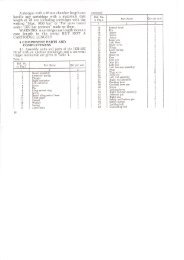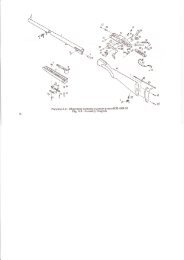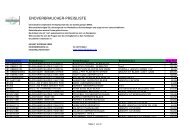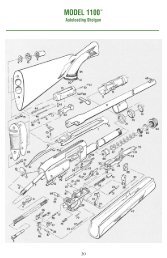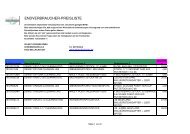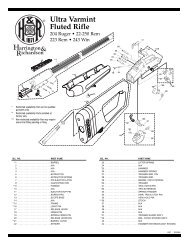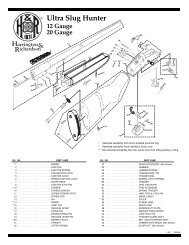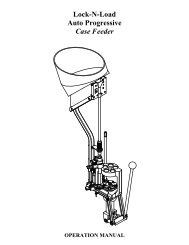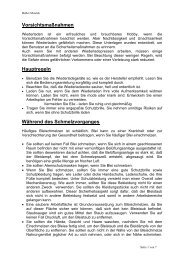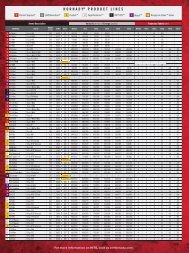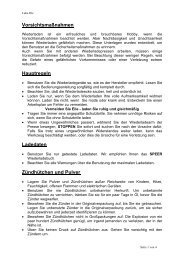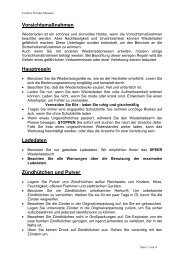HORNADY 366 AUTO OPERATION MANUAL - Hornady.com
HORNADY 366 AUTO OPERATION MANUAL - Hornady.com
HORNADY 366 AUTO OPERATION MANUAL - Hornady.com
You also want an ePaper? Increase the reach of your titles
YUMPU automatically turns print PDFs into web optimized ePapers that Google loves.
Step 5: STATION FOUR (Wad Seating)<br />
Fig. 6: Wad Seating<br />
Insert a wad in the wad guide (#106A). Pull the operating handle (#37) through a <strong>com</strong>plete<br />
stroke. When the handle (#37) is pulled, the spring (#106B) around the wad guide rod (#105)<br />
turns the wad guide bracket (#101) to align the wad with the case. The unit then rises until the<br />
wad is stopped with the platen casting (#107) by the wad ram (#48). The case continues<br />
upward until the spring fingers (#77) have entered the case mouth, and then pushes the wad<br />
guide (#101) upward until the wad is seated in the case. The spring fingers (#77) have enough<br />
resistance to prevent the wad from going through until the spring fingers (#77) are in the case.<br />
At the <strong>com</strong>pletion of the return stroke, the wad guide bracket (#101) will swing forward for the<br />
next wad to be inserted. The wad guide bracket should have 1/8” clearance above the<br />
shells. The empty shells vary in length so a closer setting would not be beneficial. Be sure the<br />
wad seating ram (#48) is set high enough for the wad to swing into position with out being<br />
folded by early contact with the wad seating ram (#48). Wad pressure is adjusted by raising<br />
or lowering the wad seating ram (#48). Most one-piece plastic wads today will self-adjust<br />
when the shell is crimped. Generally, the wad should be seated to allow 5/8” clearance<br />
between the case mouth and the shot.<br />
10



